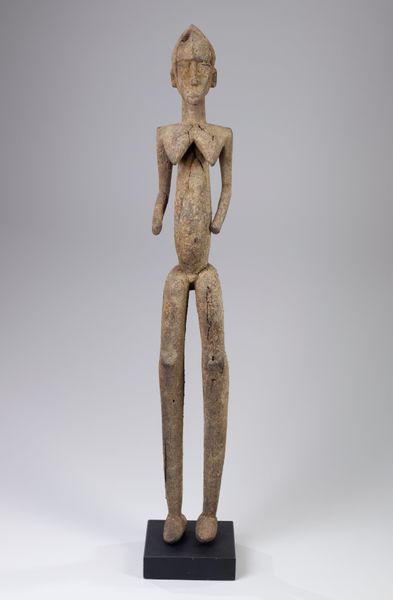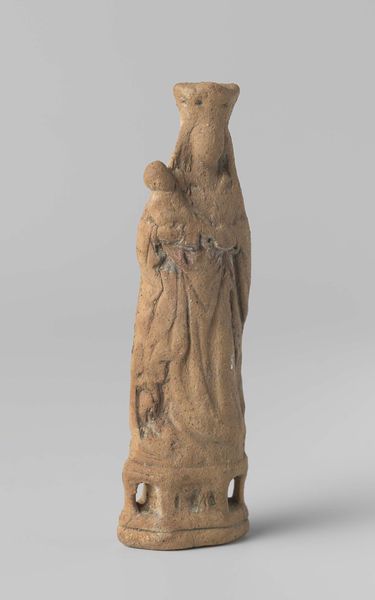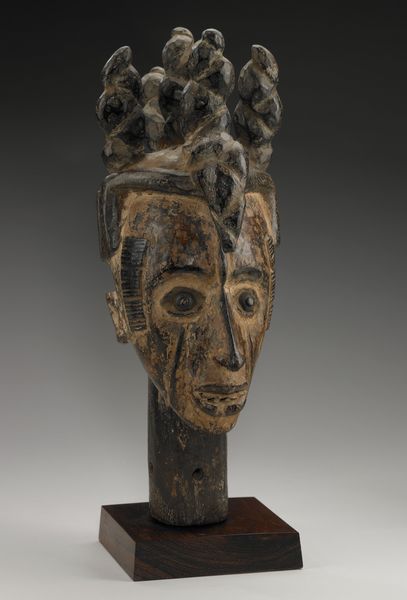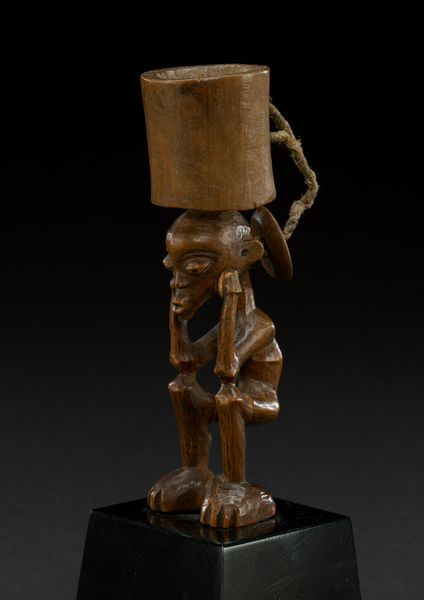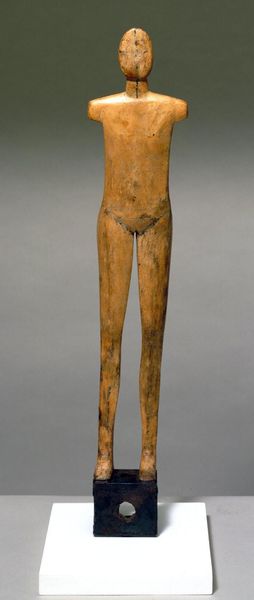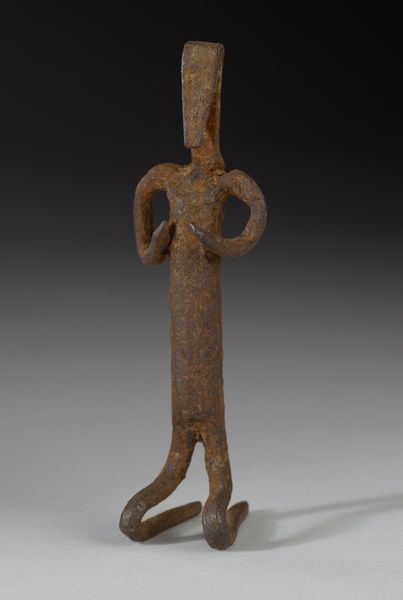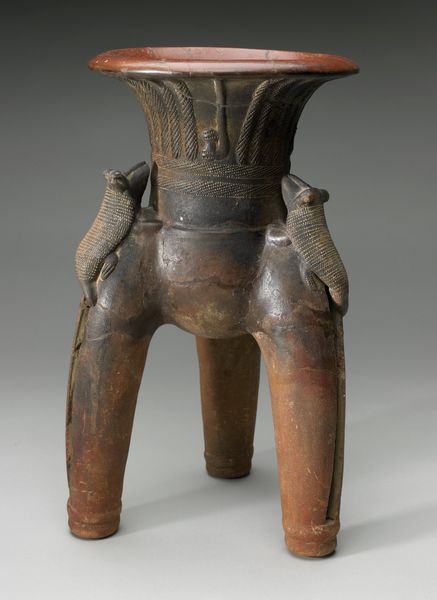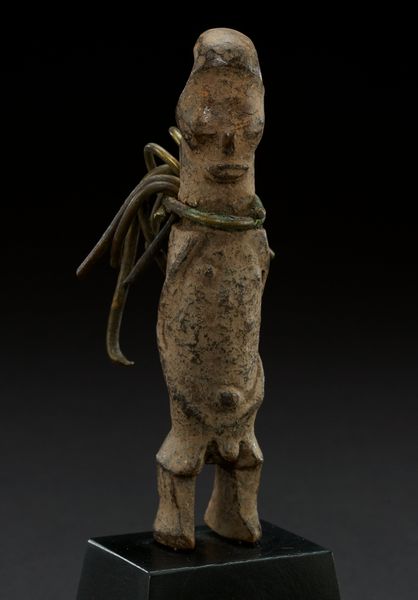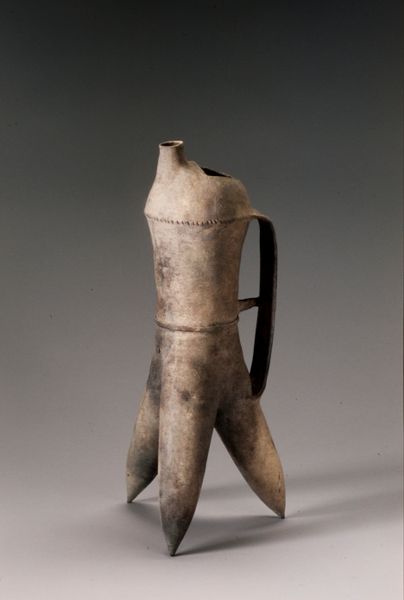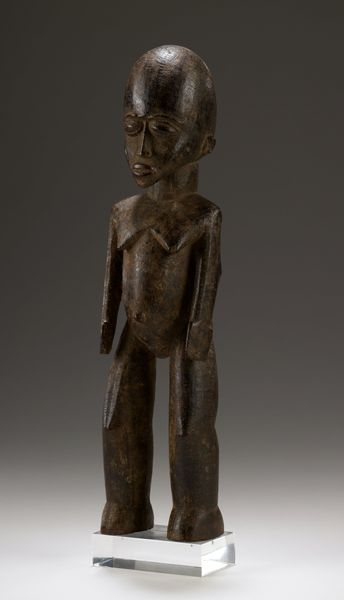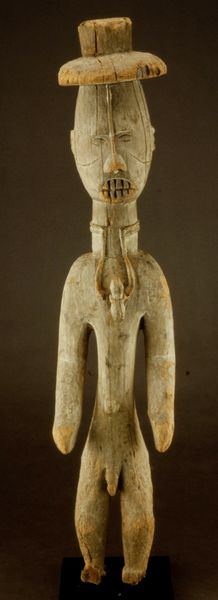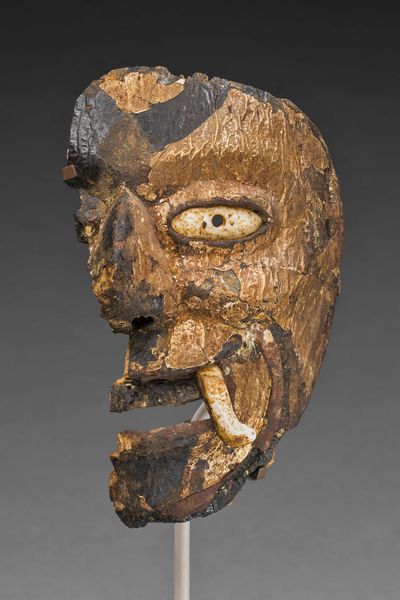
sculpture, wood
#
african-art
#
sculpture
#
figuration
#
sculpture
#
wood
Dimensions: 56 1/2 × 10 1/2 × 7 in. (143.51 × 26.67 × 17.78 cm) (overall, with stand)
Copyright: No Known Copyright
Curator: At the Minneapolis Institute of Art, we have an intriguing wooden sculpture entitled "Figure," likely crafted sometime between 1900 and 1950, and attributed to the Moba people. It strikes me as particularly raw and expressive. What's your take on it? Editor: I find it strangely haunting. The texture of the wood is so prominent, and those droopy extensions on either side of the torso suggest a sense of sorrow or burden, almost like weeping. The figure seems very stoic. Curator: Well, these figures often played a role in ancestor veneration and protection. Within Moba communities, they’re believed to house spirits and served as focal points for rituals connecting the living with the deceased. The sculpture becomes a medium through which socio-spiritual ties are enacted and reinforced. Editor: That certainly explains the palpable sense of solemnity. The material itself, the wood, feels so intrinsically connected to ideas of nature, origin, and history. Does the stylized anatomy suggest a symbolic language? The head, for instance, is so round. Curator: It's likely the artist aimed for generalized rather than individual features, emphasizing the figure's function within the communal ritual and beliefs. Stylization in such figures often prioritizes spiritual efficacy over naturalistic representation. We might view the bulbous head as signifying wisdom or connection to the spiritual realm, typical motifs we find throughout African art. Editor: It makes me wonder about the sculptor, their skill and intention as they worked with such a coarse material. To imagine the figure emerging from the block is quite powerful. Curator: It is. This “Figure” embodies the complex interplay between artistic creation and socio-cultural necessity that informs the ritual practices. So beyond its immediate visual impact, it allows insight into social relationships of the Moba people, which is a privilege. Editor: Definitely! The "Figure" stands as a potent reminder of how art can be deeply interwoven with spiritual life, offering insight into human values. It really embodies the saying, "Still waters run deep."
Comments
minneapolisinstituteofart almost 2 years ago
⋮
Look at the grain of the wood: it almost looks like a different material. This eroded figure was kept outdoors for decades, to protect a Moba village. It represents a female ancestor of a clan of the Moba people, and villagers used it in the past as a focal point to make sacrifices in order to ensure successful hunts and bountiful harvests. It was abandoned when the owners converted to either Christianity or Islam, two religions that view most traditional beliefs and practices as pagan.
Join the conversation
Join millions of artists and users on Artera today and experience the ultimate creative platform.
